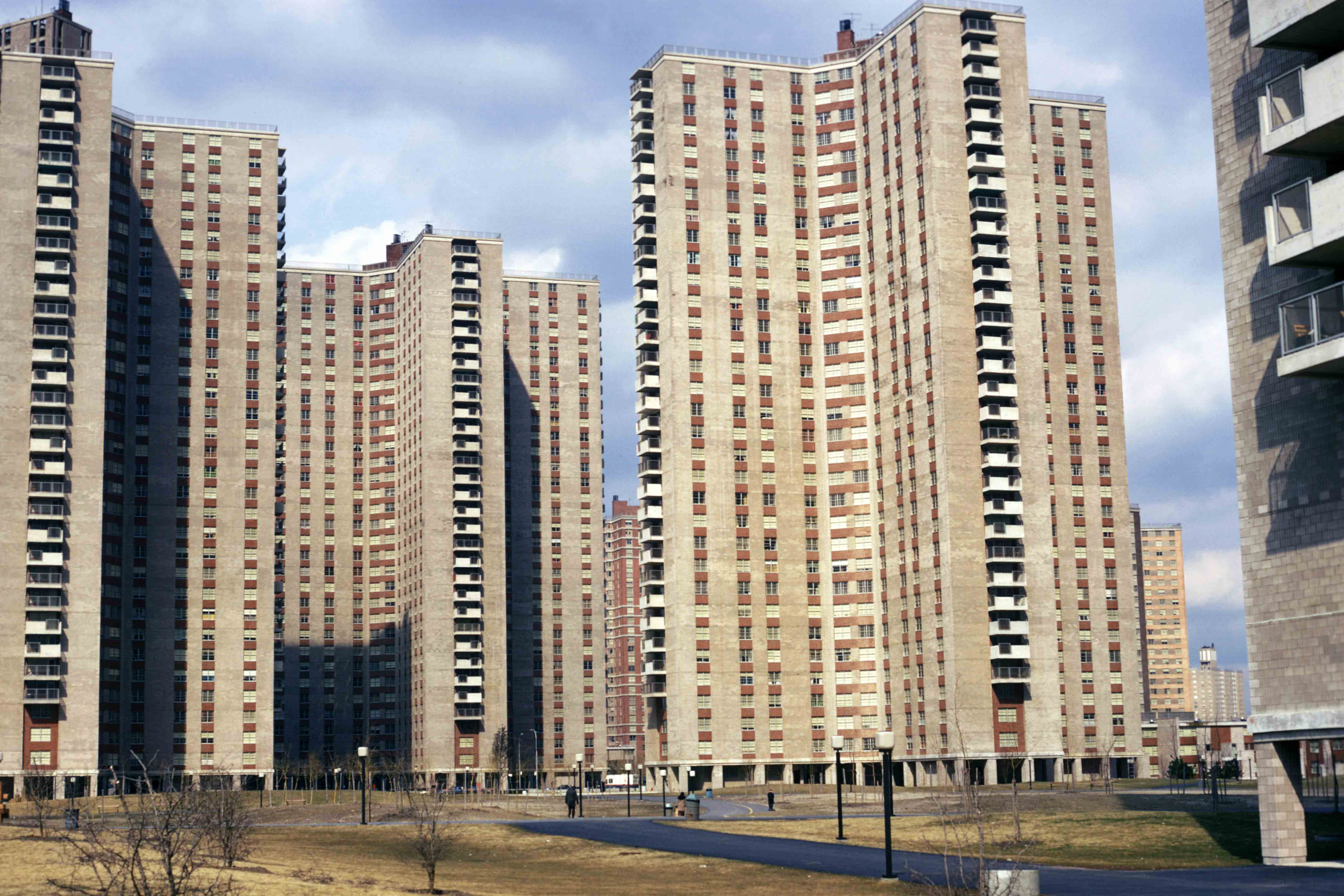Inspired by the successful union-built cooperative housing and the limited dividend co-ops pioneered by the United Housing Foundation and with the work of Abraham Kazan, Robert Moses, The Rockefeller Foundation, I.D. Robbins, Citizens Housing and Planning Council, City Club of New York, Mayor Wagner, and Warren Moscow — the Mitchell-Lama program was signed into law in 1955.
Based on and influenced by the Rochdale Principles of Cooperation, Mitchell-Lama housing came about during a time when government — city, state and federal — believed government had a responsibility to invest in its cities and its citizens. Legislators recognized that substandard housing with crowded, unsafe, unsanitary conditions, and the shortage of decent housing contributed to the breakdown of communities and the deterioration of urban living, making urban areas undesirable places to live, work, and raise families. Unwilling to let this happen in New York, they enacted this Limited Profit Housing Companies Law, (which later became Article II of the Private Housing Finance Law), to encourage developers to construct housing for people of low, moderate, and middle income, understanding that such an investment would allow communities to grow and flourish, thereby expanding social and economic opportunity.
The Limited Profit Housing Companies Law had, among many others, three features that made possible such housing:
- State/municipality loans were issued at very low interest rates for very long terms. In the economics of housing, one of the biggest costs is the mortgage. Rates, sometimes as low as 1%, and terms, sometimes as long as 35 or 40 years, can result in greatly reduced charges to shareholders.
- Municipalities granted tax abatements which originally ranged from 40% to 100%. Abatements later became standardized across the State in the form of the “Shelter Rent” tax formula, which sets real estate taxes at 10% of the co-op’s operating expenses (less heat and utilities). This saves the co-op anywhere between and 75% and 85% on their tax bill.
- Many projects were built on federally subsidized urban renewal land, further reducing the costs to the owner.
Mitchell-Lama was intended to last forever as affordable housing — there was NO BUY-OUT PROVISION IN THE ORIGINAL LAW.
From 1955 to 1962 the ML program developed 74 buildings with 11,906 units. All these buildings were cooperatives and most had union or not-for-profit sponsors. All in all, the ML program created 69,673 units of rental housing and 69,755 units of cooperative housing.
The big mistake happened when Nelson Rockefeller replaced Governor Averell Harriman and pushed through an amendment to the ML program designed to further incentivize private developers to build more ML rentals. These changes included:
- Lowering the amount of equity a developer needed to put into a project from 10% to 5% of the total development costs.
- Allowing the option to ‘buy-out’ of the program/‘go private’ after a number of years.
Perhaps, at that time, there might have been a valid argument to offer further incentives for the development of ML limited-profit rentals — although the incentives were already good. But co-ops were being built without a problem and there was no need for further incentives for the development of cooperatives. This ‘Buy-Out’ provision should never have included Mitchell-Lama co-ops!
The Rochdale Principles
Open Membership. A co-op does not discriminate. Anyone can join.
Democratic Control. The co-op is owned and operated by its members. Each member gets one vote (unlike publicly traded companies in which those who buy the most shares get the most votes).
Limited Return on Capital. A co-op is not intended to be a money-making enterprise for its members. Members may thus be paid only a “limited” amount of interest on any money they invest.
Surplus Belongs to Members. Since the members are the owners, they receive any profit the co-op makes. In many co-ops the profits are reinvested into the business rather than being returned to the members.
Honest Business Practices. Cooperatives deal openly, honestly, and honorably with their members and the general public.
Ultimate aim is to advance the Common Good. The ultimate aim of all cooperatives should be to aid in the participatory definition and the advancement of the common good.
Education. Co-ops are expected to educate their members, officers, and employees and of the general public in the principles and techniques of cooperation, both economic and democratic.
Cooperation among Cooperatives. Co-ops should actively cooperate in every practical way with other cooperatives.
In 1986, MacNeill Mitchell told the New York Times that the:
“Legislature never intended to convert the developments to private ownership. They were designed as something the public enterprise could handle and something that would continue. In hindsight, we should have looked at what would happen in the future. Frankly, we didn’t give it much thought.”
This legislative error to allow for the option to ‘buy-out’ of the program has led to the loss of:
- 45,841 Mitchell-Lama rental units — over 65%
- 6,479 Mitchell-Lama cooperative units — less than 10%
